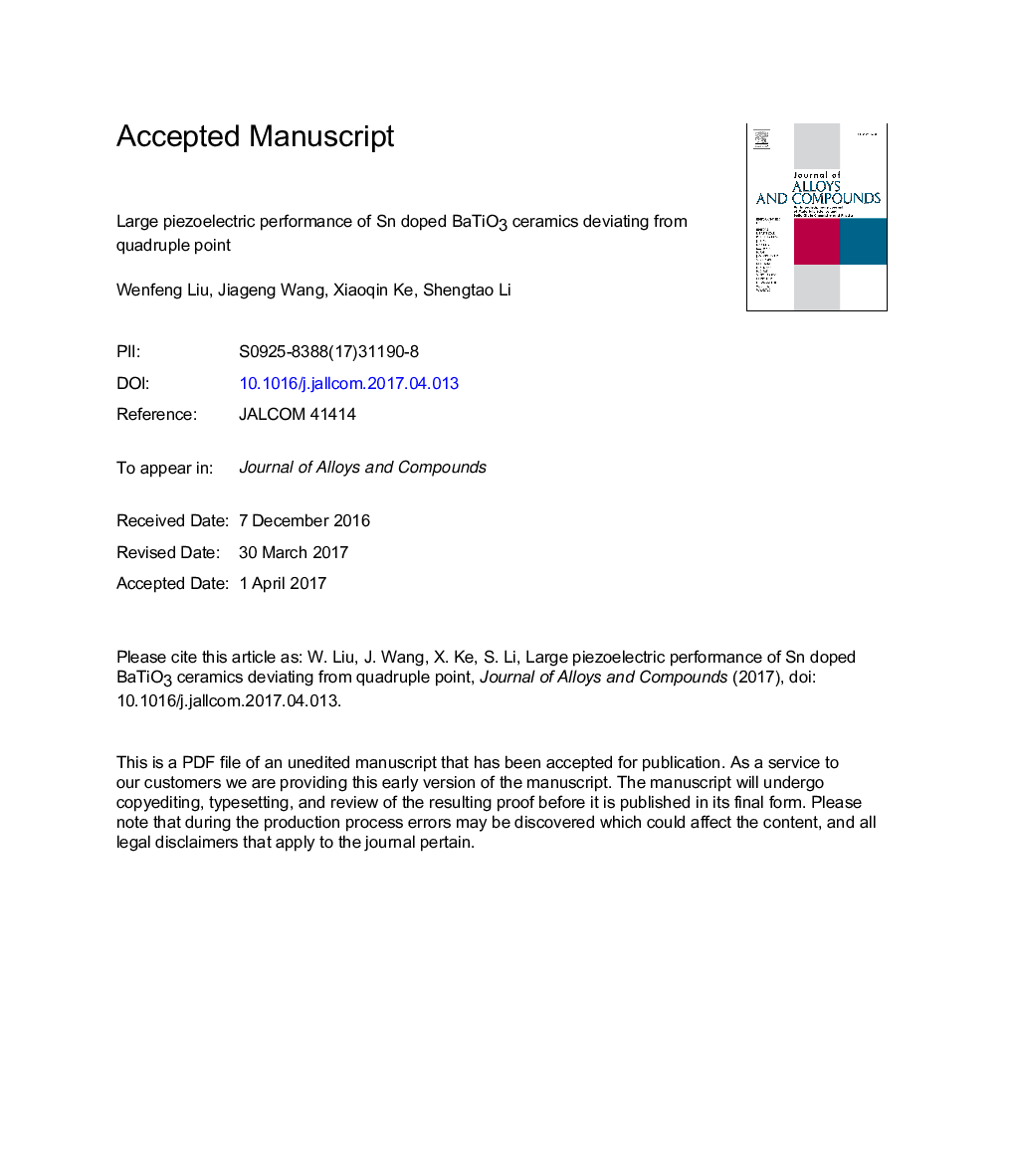| Article ID | Journal | Published Year | Pages | File Type |
|---|---|---|---|---|
| 5460397 | Journal of Alloys and Compounds | 2017 | 13 Pages |
Abstract
The piezoelectric performance, both weak-signal piezoelectric coefficient d33 or large-field electrostrain, were systemically measured from room temperature until their Curie temperature. Large piezoelectric coefficient d33 of 920 pC/N was found on the boundary between the tetragonal (T) and the orthorhombic (O) phase (around 50 °C) rather than the quadruple point with lowest free energy barrier. Further simulation work based on the Landau free energy function also supported the experimental results, owing to the joint effect of the anisotropy energy and the order parameter polarization. Besides, the electrostrain of 0.15% with small hysteresis was also found on the O-T boundary. Systemically study pointed out that polarization rotation would have a significant contribution to the overall piezoelectric response.
Related Topics
Physical Sciences and Engineering
Materials Science
Metals and Alloys
Authors
Wenfeng Liu, Jiageng Wang, Xiaoqin Ke, Shengtao Li,
